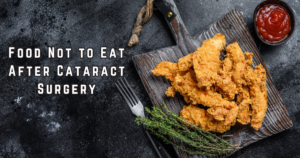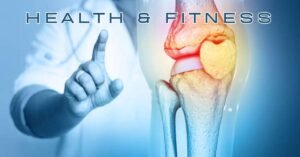A vitamin is any of several chemical compounds that higher animals require in trace amounts for normal growth and well-being. Vitamins differ from other physiologically significant substances like proteins, carbs, and lipids in several ways. Nearly all of these latter compounds can be manufactured by animals in sufficient amounts, even though they are also essential for healthy biological activities. Vitamins, on the other hand, must be received from diet or from a synthetic source because they are typically not created in sufficient levels to meet body needs. Vitamins are, therefore, referred to as necessary nutrients. Another way that vitamins vary from other biological substances is that they require very tiny amounts to perform their effects.
These roles are typically catalytic or regulatory, promoting or managing essential chemical events within the body’s cells. A particular deficiency condition may arise if a vitamin is not consumed or is not adequately absorbed by the body.
Although they can also be identified by their chemical names, such as niacin and folic acid, vitamins are typically identified by certain letters of the alphabet, such as vitamin D or vitamin C. The water-soluble vitamins and the fat-soluble vitamins are the two categories into which biochemists typically divide them.
Vitamins’ biological significance
Finding and initial designation
Christiaan Eijkman, a Dutch physician and pathologist, produced some of the earliest proof that vitamins existed in the late 19th century. His lab fowl developed polyneuritis, a nerve disease, in 1890. He observed that the illness resembled the polyneuritis linked to the beriberi nutritional condition. In 1897, he proved that feeding the hens polished white rice induced polyneuritis but that when the birds were fed unpolished rice, the condition went away. In 1906–07, British biochemist Sir Frederick Gowland Hopkins concluded that salts and macronutrients alone could not sustain growth after noticing that animals were unable to manufacture specific amino acids.
The Polish scientist Casimir Funk proved that polyneuritis in pigeons fed polished rice could be prevented by adding a concentrate made from rice bran, a part of the outer husk that was removed from rice during polishing, to the birds’ diet in 1912, the same year Hopkins published his findings about the missing nutrients, which he referred to as “accessory” factors or substances. Funk suggested that the absence of a crucial component in the birds’ diet—now identified as thiamin—found in rice bran was the cause of the polyneuritis. Funk thought that shortages of the same chemical type also produced several human ailments, especially pellagra, scurvy, and beriberi.
Elmer McCollum, an American researcher, separated vitamins into two categories in 1913: “fat-soluble A” and “water-soluble B.” As the number of claims for the discovery of other vitamins increased, scientists gave the new compounds the names C, D, and so forth. It was later discovered that vitamin B, a water-soluble growth factor, was at least two different substances, only one of which was able to protect pigeons from polyneuritis. The pigeon-needed factor was known as vitamin B1, and the rat-needed factor was known as vitamin B2. The vitamins were given chemical names as their chemical structures were determined, such as riboflavin for vitamin B2 and thiamin for vitamin B1.
Regulatory function
In contrast to other dietary components known as macronutrients (such as fats, carbs, and proteins), which are the substances used in the reactions regulated by the vitamins, the vitamins control reactions that take place in metabolism. Vitamin deficiency inhibits one or more particular metabolic processes in a cell, which can ultimately upset the metabolic equilibrium in a cell and throughout the body.
All water-soluble vitamins, with the exception of vitamin C (ascorbic acid), have a catalytic role; that is, they work as coenzymes of enzymes involved in energy transfer or in the metabolism of proteins, lipids, and carbohydrates. The prevalence of water-soluble vitamins in the majority of plant and animal tissues involved in metabolism reflects their metabolic relevance.
Specific fat-soluble vitamins contribute to the construction of cellular membranes or help preserve their integrity, which in turn affects how well they function. By regulating the synthesis of specific enzymes, several fat-soluble vitamins may also have a genetic function. Since fat-soluble vitamins are required for particular processes in highly specialized and differentiated tissues, their distribution in nature is typically more selective than that of water-soluble vitamins.
References
The distribution of vitamins in nature is not uniform even though they are present in all living things due to either internal synthesis or environmental acquisition. Some species or tissues lack them; for instance, plant cells synthesize beta-carotene, which may be transformed into vitamin A, whereas animal tissues do not. Conversely, only animal tissues contain vitamin A and D3 (cholecalciferol). Animals and plants are both significant natural providers of vitamins for us. Because vitamins are not equally distributed in meals, a person is more likely not to get enough of one or more vitamins if his diet is more restricted.
All vitamins are accessible for human consumption in pharmaceutical formulations and can be commercially manufactured or generated from food sources. Significant levels of vitamins are frequently destroyed or eliminated during commercial food processing (such as when grains are ground). However, in the majority of these cases, chemical procedures are used to replenish the vitamins. Certain foods, including milk, are fortified with vitamins that are not typically found in them.
Cooking can also cause vitamin loss; for example, heat can degrade vitamin A and remove water-soluble vitamins from food, which can then be lost. Microorganisms that are typically found in the intestines of some animals can synthesize specific vitamins, such as vitamin K and B vitamins. Still, they usually do not provide the host animal with an adequate amount of vitamins.
Needs Ganismsof living or
Different species have different vitamin needs, and it can be challenging to estimate how much of a given vitamin an organism needs due to a variety of circumstances (e.g., genetic diversity, relative proportions of other dietary ingredients, environmental pressures). The recommended daily vitamin intakes are high enough to accommodate for individual variance and typical environmental pressures despite the lack of consensus regarding the human requirements for vitamins.
Other dietary components and vitamins have a variety of interactions with one another. For instance, overlapping metabolic activities (of the B vitamins in particular), protective roles (like vitamins A and E), or structural dependencies (like cobalt in the vitamin B12 molecule) could result in antagonistic or synergistic interactions.
The degree of vitamin deprivation determines the severity of hypovitaminosis, a typical deficiency condition caused by inadequate consumption of a particular vitamin. Vitamin A insufficiency can cause specific symptoms like functional night blindness or generic ones like appetite loss and stunted growth. Not every symptom of a particular ailment of deficiency will manifest, and the type of symptoms may differ depending on the species. Specific effects of vitamin deficiencies cannot be reversed by supplementing with the vitamin, particularly if nonregenerative tissue (such as the cornea of the eye, nerve tissue, or calcified bone) has already been damaged.
Primary (or dietary) vitamin deficiencies occur when the dietary intake falls short of the typical vitamin requirement. If a prior condition or state of stress is present, a secondary (or conditioned) deficiency may arise (even though the dietary intake is adequate) (e.g., malabsorption of food from the intestine, persistent alcoholism, multiple pregnancies, and breastfeeding). (See nutritional illness for further information on vitamin deficits in humans.)
Development of organisms reliant on vitamins
The creation of enzyme systems to catalyze the intricate sequences of chemical reactions involved in metabolism was necessary for the evolution of metabolic processes in primordial forms of life. All of the required substances, including the vitamin coenzymes, were initially presumably able to be obtained from the environment; eventually, an organism was able to manufacture these substances. However, the capacity to synthesize some of these vitamin coenzymes was gradually lost as higher forms of life developed.
Higher plants are still able to produce vitamins and other growth factors because they do not appear to need them. However, some groups of insects need niacin, thiamin, riboflavin, vitamin B6, vitamin C, and pantothenic acid. Vitamin A, D, thiamin, riboflavin, vitamin B6, and pantothenic acid must be obtained by diet in all vertebrates, including humans. Some vertebrates, especially the more highly evolved ones, also need another vitamin.
The vitamin that dissolves in water
Fundamental characteristics
Despite the fact that all of the vitamins in this category dissolve in water, their levels of solubility vary. This characteristic sets them apart from fat-soluble vitamins, which the body processes and stores differently and affects their absorption pathway, excretion, and level of tissue storage. The table provides the active forms and recognized names of each vitamin in each vitamin category. Ascorbic acid, or vitamin C, and the B vitamins—thiamin (B1), riboflavin (B2), vitamin B6, niacin (nicotinic acid), vitamin B12, folic acid, pantothenic acid, and biotin—are water-soluble. The elements carbon, hydrogen, and oxygen are present in these elementary molecules; some also contain cobalt, sulfur, or nitrogen.







